Well-known documentary photographer Rodger Kingston once wrote: The camera is the save button for the mind’s eye.”
That’s something Larry Williams knows a thing or two about. As a professional equine photographer noted for his ability to accentuate the beauty of each horse he captured on film at farm calls as well as action inside the arena at some of the country’s largest breed shows, Larry has spent the last 28 years behind the lens of his camera.
But that’s not what he set out to do.
Growing up in Waterford and Holy, Michigan, just northwest of Detroit, Larry had friends and family with riding horses. At age 14 he acquired an unbroke 5-year-old Quarter Horse and after some education for both, courtesy of Peggy Bannon, he set out to show with the Wolverine Riders 4-H Club. After high school Larry attended Michigan State University for a year where he gained knowledge in showing and judging.
“After working at a summer job plus having a handful of horses to ride, I didn’t return to academics,” he said. “I attended the Color Breed Council for horse show judges, acquiring cards from several associations.”
Armed with his knack for organization and keen management skills, Larry gravitated more and more toward horse show management.
And, that’s where a chance encounter with Harold Campton changed the direction of his whole life.
Larry was managing a horse show at the Michigan State Fairgrounds in 1992 and Harold was the show’s official photographer.
“He invited me to attend his photography school near Ocala, Florida,” Larry recalled. Larry took Harold up on his offer and it was there that he met Dick Waltenberry, one of the Reining industry’s most well-known photographers. After the class was complete, Campton asked Larry to stay after the class to invite him to go to work for him.
“I took the opportunity with the stipulation that I keep my judging and management commitments through first week of October,” Larry explained.
He immediately hit the road, traveling to a show in Columbus, Ohio.
“After my third day of observing Harold took me to the Reining arena, shot three runs, handed me the camera, flash unit and three rolls of film and told me to bring it back after the class.”
He was on his way. During that first run of horse show circuits, which included the Appaloosa World Show, Quarter Horse Congess and AQHA World Show, Larry got the opportunity to work with many exceptional equine photographers including KC Montgomery, Doug Lehey and Don Shugart.
Life Changes and Industry Developments
While fulfilling one of his prior commitments to co-manage the Michigan State Fair, the horse show secretary introduced Larry to Karen Pedersen, a Chicago native who had moved to the Detroit area at 17 years of age. She was at the fair showing her Paso Fino Horses.
“We hit it off and continued to communicate after I went on the road,” Larry explained.
After returning to Florida for the winter following the 1992 show season, Campton encountered some health issues and sent Larry, along with Lehey to shoot the Florida Gold Coast, which included the Florida State Fair.
“Since I had an interest in Paso Finos myself, I took a few shots of them there on my own and sent the proofs to Karen,” Larry recalled. “She thought the action was good.”
By Easter weekend of the following year, Campton had decided to relocate to Wisconsin and it was Larry’s job to drive the overloaded bus from Ocala to Mineral Point. That’s where he met fellow professional equine photographer Shane Rux, a young handyman/carpenter at the time.
“I let Harold know that I spent 40 years trying to get out of Michigan and had no interest in moving to Wisconsin,” Larry explained. “During that Easter weekend I knew that Karen would be visiting her parents in Elmhurst Illinois so I borrowed Harold wife, Patty’s mini van and surprised her and her mom.”
Harold assured Larry that living in Mineral Point was not a requirement. So he returned to Michigan to meet up with Karen.
“We bought camera equipment and a fifth wheel RV,” he said. “When the salesman was going to explain how to winterize the trailer I told him we were headed south untill there were no signs that said bridge may freeze.”
The next year-and-a-half, Larry and Karen traved from show to farm. Between, they stayed at Rainbow River Campground in Dunnellon, Florida. The manager traded camping for photos to be used in their brochure.
“Following the Gulf Coast show, Clay Farrell invited us to hook-up our RV at Andy Moorman’s farm in Venice Florida,” Larry explained. “We fell in love with the area and were lucky to find a place that we could afford and a seller willing to carry the balance.”
Developing A Business of their own
In 1993 Larry established his own photography business, Larry Williams Photography and he and Karen married in 1995.
“Larry got really good, really fast,” Karen explained. “My job was to make it work as a business.”
Assignments started out with many of the spring and fall weekend Quarter Horse, Appaloosa and Paint futurities, then transitioned to all Championship shows.
Over the past several years Larry Williams Photography has served as the the official photographer of the Fort Worth Stock Show, Florida Gold/Gulf Coast, Florida State Fair, Appaloosa Naional/Youth World Show, International Buckskin Horse Association World Show, The American Buckskin Registry Association World Show, Pony Of The Americas Club (POAC) International Championships, the National Snaffle Bit Association (NSBA) World Championship Show and Breeders Championship Futurity, American Paint Horse Association World Show, the Appaloosa World Show and the Paso Fino Grand National Championships.
The biggest show they ever handled together was the Paso Fino Grand National Show in Asheville, Tennessee, in 1993.
“It was film so we processed film and proofs all night, and shot the show, the backdrop and showed proofs all day,” Karen said. “It was just Larry and I, for four days.”
Changes in Scenery
After several years of extensive travel, Larry and Karen, decided it would be more convenient to move to Ocala.
“As we continued to have contracts in Fort Worth, Tulsa, Oklahoma City and Perry, Georgia, we determined that Ocala shaved three hours off every trip and farm calls kept us busy between shows,” Larry said.
Then in 2007, following the NSBA World Championship Show they took a vacation to Pagosa Springs, Colorado.
“We decided it was a good time for a new adventure, so we purchased a parcel of land and a town house with the intent to build when the house in Ocala sold,” Larry said. “After the market and real estate tanked and we both found ourselves dealing with cancer, we wrote checks to get out of upside down mortgages and our priorities changed.”
They moved back to Michigan, closer to family, and downsized to operate within their comfort zone.
Changes in the Industry
In the beginning all photographs were shot on medium format film. The exposed film was shipped overnight to a lab in Columbus, Ohio, where everything was processed and print everything 8×10 and shipped back the next day at National and World Shows.
“For the futurities and smaller shows, we converted part of the RV into a dark room where we had a portable lab to process film and print contacts sheets for proofs,” Larry explained. “The transition from medium format film to 35mm film had us taking the exposed film to a local one-hour lab that printed 4×6 proofs.”
The next phase of photography was the transition from film to digital. That created a whole new challenge and expense of camera equipment and computers, giving them the opportunity to expand creativity and adjust their marketing strategy.
Over the years, Karen says she has been everything from office manager, to image wrangler to rug person.
“I have done everything except shoot the camera (with one exception) and drive the truck,” she said.
Winding Down
In 2021 Larry and Karen Williams announced they would retire at the end of the year.
“When we started our business, I set up a three-digit code system to number images and always joked that we would not go past #999,” Karen laughed. “I said that I would not ‘roll over’ to 001 again, and wouldn’t go to four digits. Well, it just so happened that the 2021 Appaloosa World Championship Show was #999.”
The effort of the setup and management of the events was getting to be too much.
“The pleasure was no longer worth the pain,” Karen said. “But I still love to edit and Larry still loves to shoot.”
What Lies Ahead
It’s been an adjustment being at home, both Larry and Karen admit.
“I love to garden, but have not been able to enjoy watching things grow because we would plant and leave,” she said. “We live near one of the prettiest lakes up here, so we bought a small boat to enjoy it. We both are outdoor people, so enjoying this area will be fun. Oh, and we got chickens!”
You may continue to see Larry with his camera at shows or farm calls, and Karen may continue to edit images for other companies.
“We are both happy and well, and we think now is the best time to step away and take time to do the other things we enjoy,” she said.
While the time may have been right to step away Larry says he is grateful to have had the opportunity to make a significant contribution to the equine industry and fulfill his passion of earning a living with horses.
“With pace of technology and challenges of travel, we just felt it was time to pass the baton to the next generation,” he said.



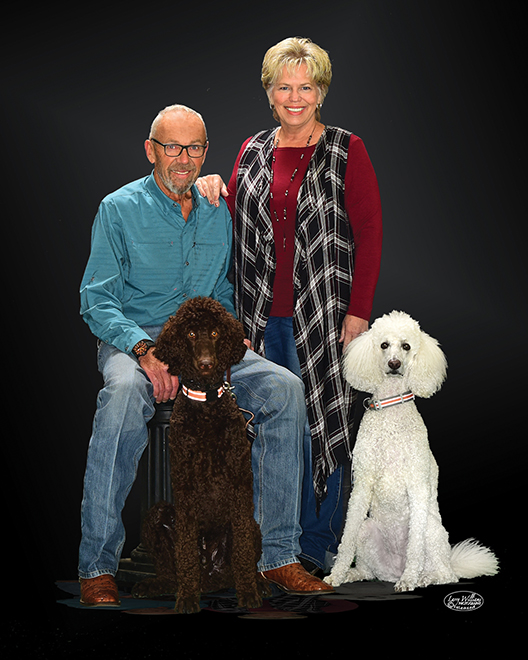

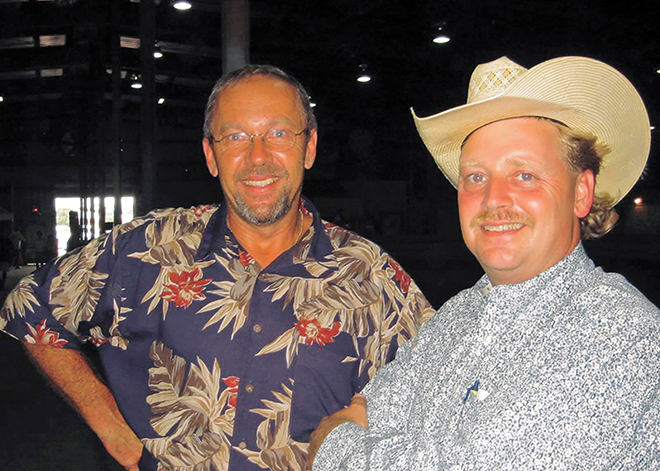
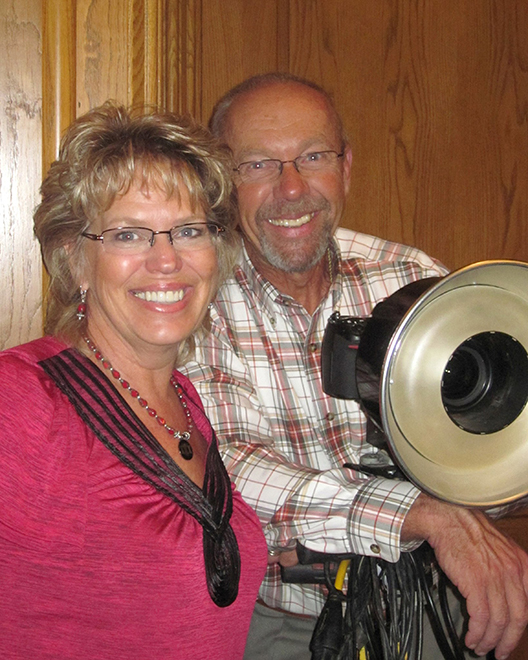
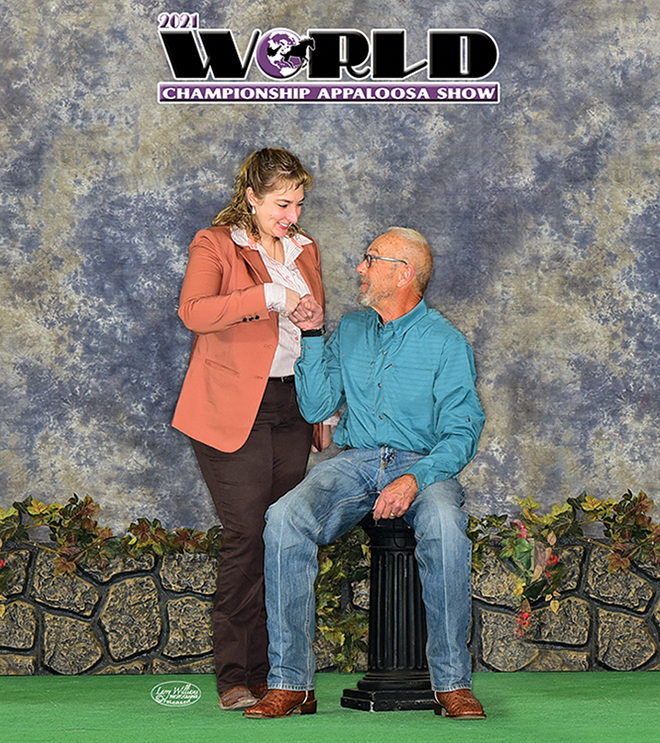
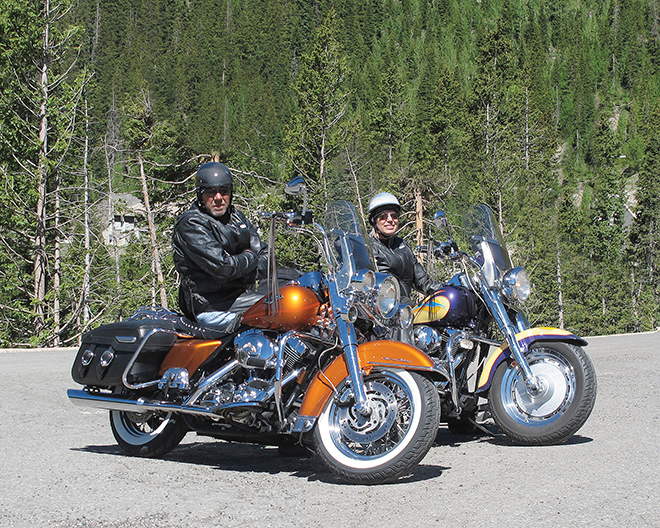
You must be logged in to post a comment Login